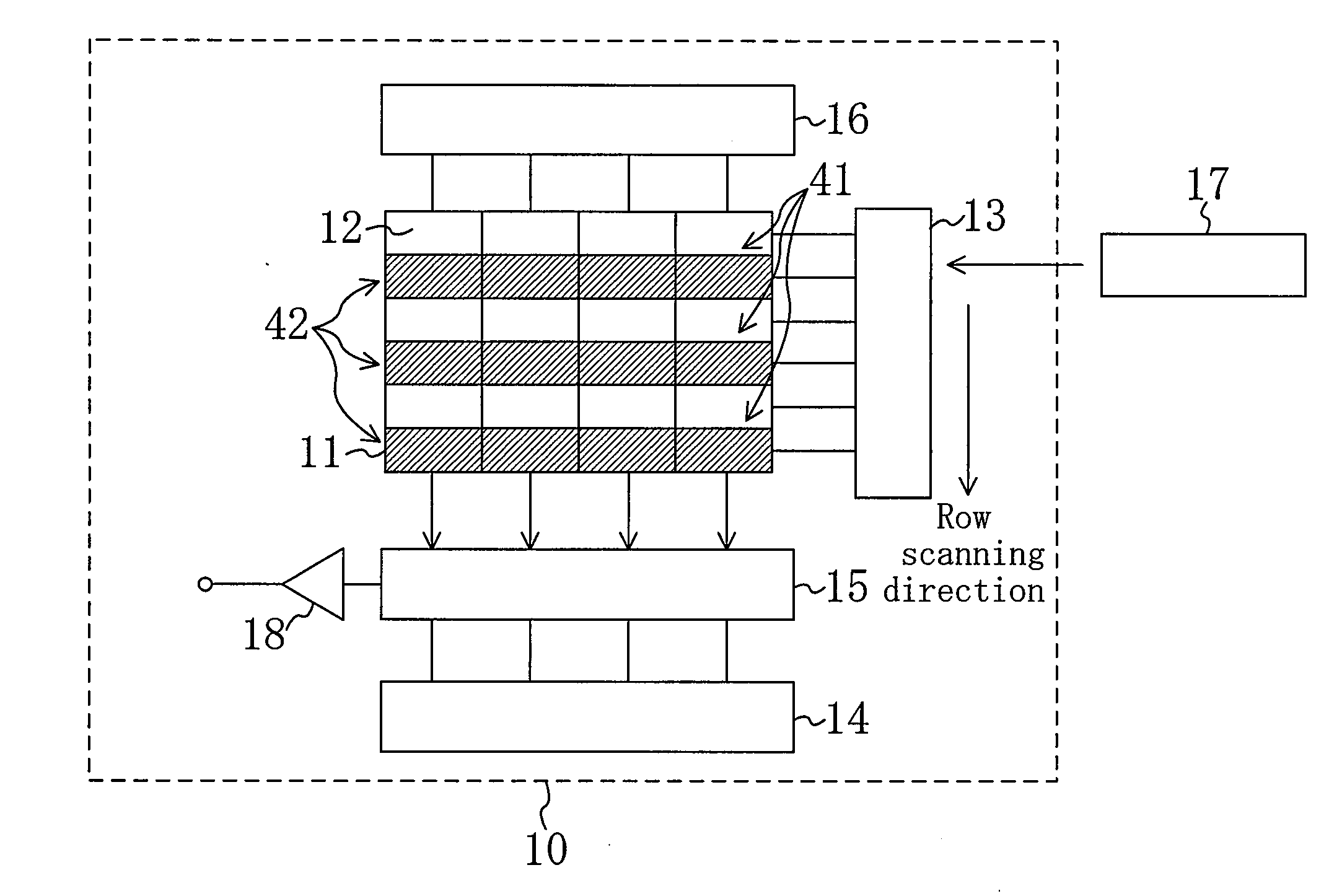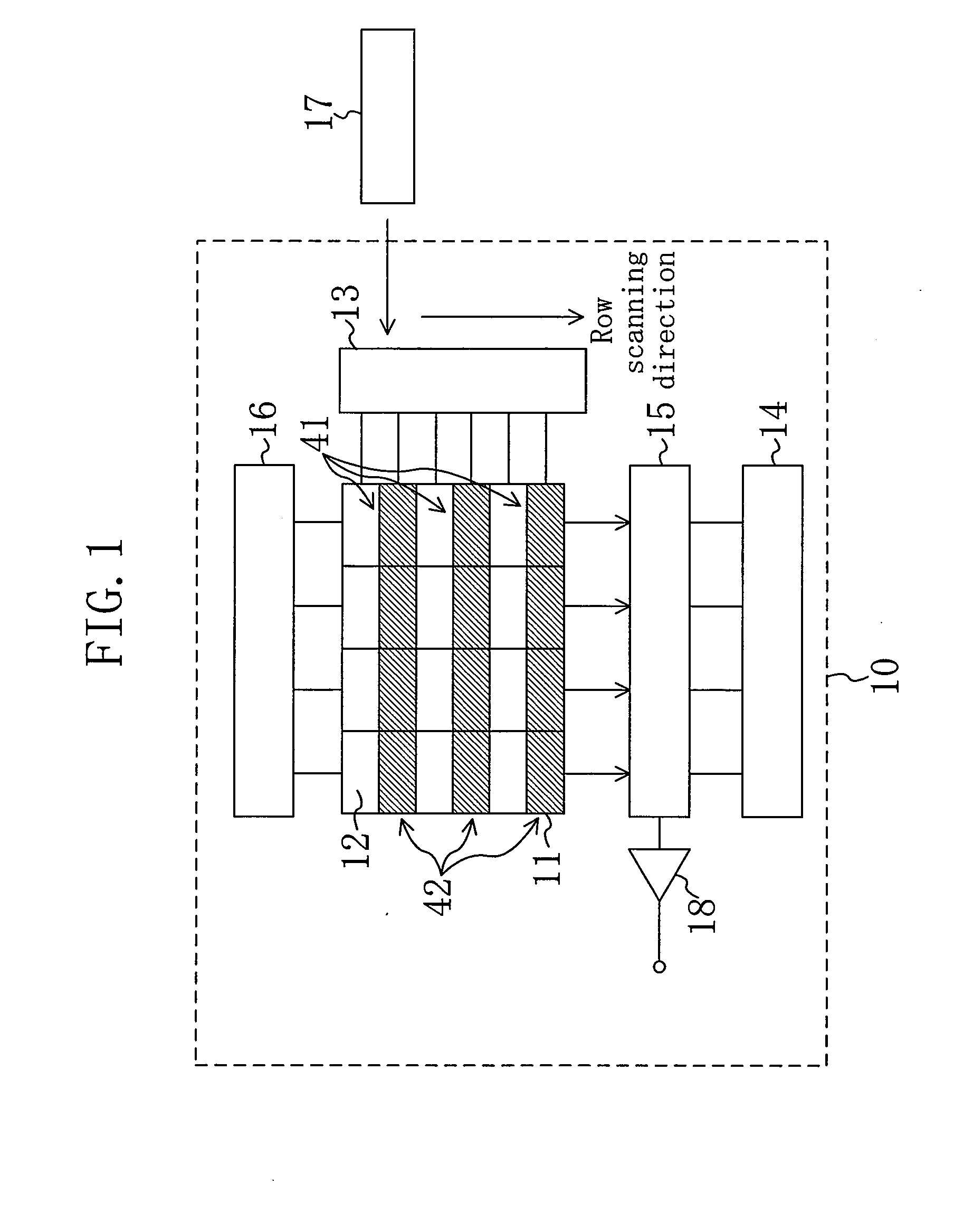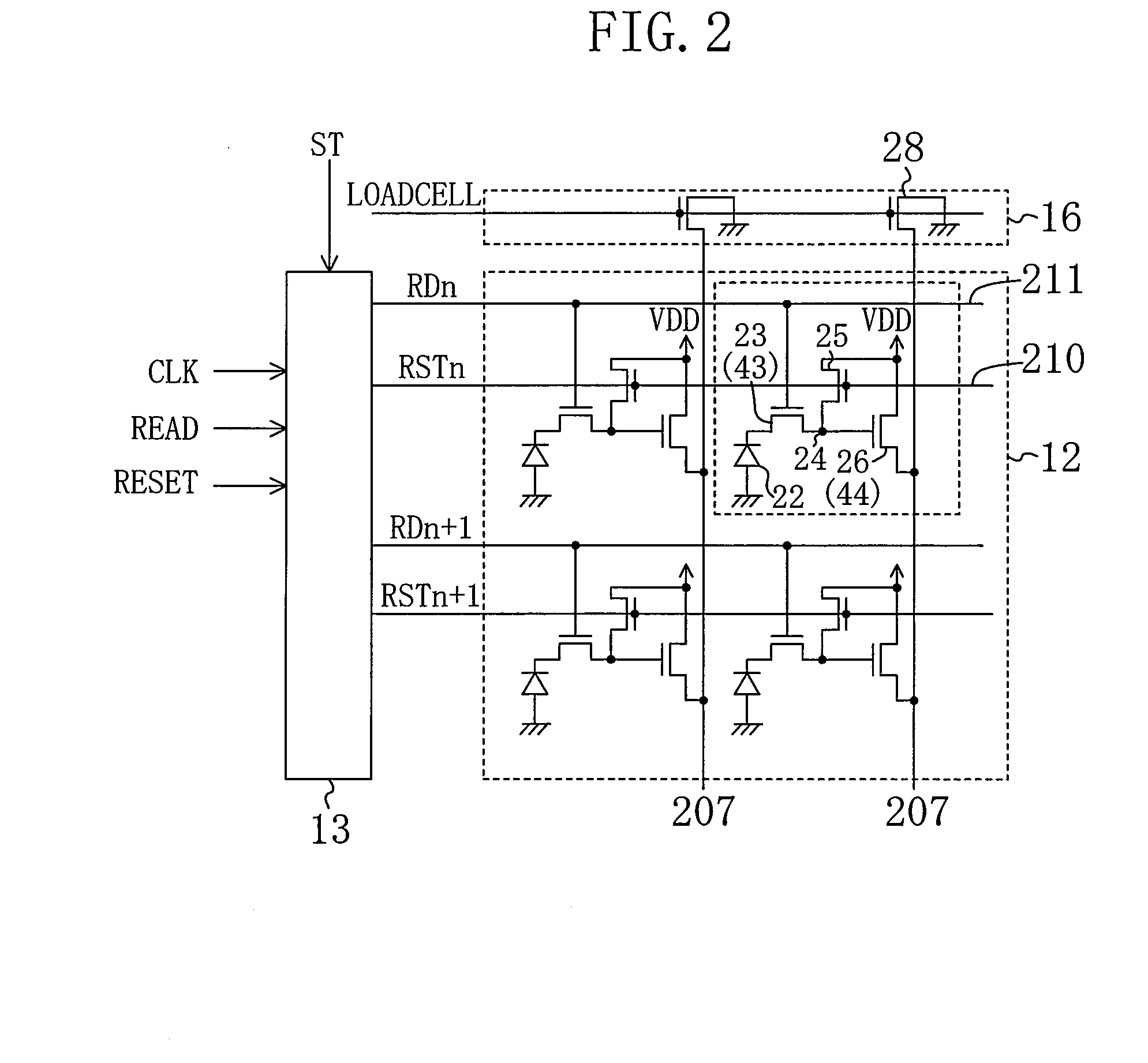Solid-state imaging device, imaging apparatus and driving method for the same
a technology of solid-state imaging and imaging apparatus, which is applied in the direction of radio frequency controlled devices, instruments, television systems, etc., can solve the problems of insufficient fixation of the potential of the p-well in the center of the imaging region, inferior results, and generation of false signals, so as to prevent overflowing of charge from the photoelectric conversion elements of the second-group pixels, the effect of reducing the number of frames and reducing the number of operations
- Summary
- Abstract
- Description
- Claims
- Application Information
AI Technical Summary
Benefits of technology
Problems solved by technology
Method used
Image
Examples
embodiment 1
Circuit Configuration
[0104]FIG. 1 shows an outline of a solid-state imaging device of Embodiment 1 of the present invention. As shown in FIG. 1, the solid-state imaging device, denoted by 10, includes an imaging region 11 composed of a plurality of pixels 12 arranged in a matrix. In this embodiment, the pixels 12 include first-group pixels 41 that are read during thinning drive and second-group pixels 42 that are skipped during the thinning drive. Although the first-group pixels 41 and the second-group pixels 42 are arranged every other row in the illustrated example, any other arrangement of these pixels may be adopted.
[0105]Each of the pixels 12 is subjected to read operation and reset operation with a read pulse and a reset pulse supplied from a row scanning section 13. The row scanning section 13, connected to a control section 17, generates control pulses such as a transfer pulse and the reset pulse based on various control signals supplied from the control section 17.
[0106]Sig...
embodiment 2
[0151]Embodiment 2 of the present invention will be described with reference to the relevant drawings. FIG. 11 shows a circuit configuration of a main portion of a solid-state imaging device of Embodiment 2. In FIG. 11, the same components as those in FIG. 2 are denoted by the same reference numerals, and the description thereof is omitted here. The entire block configuration of the solid-state imaging device is the same as that of Embodiment 1.
[0152]As shown in FIG. 11, the solid-state imaging device of this embodiment has a read selection transistor 32 and a pull-down transistor 33 for each row. The read selection transistor 32 for the n-th row receives at its gate an output signal Qn from the shift register provided in the row scanning section 13 and receives at its drain a read pulse READ supplied from the control section 17, to thereby supply a transfer pulse RDn for the n-th row to the transfer signal line 211 for the n-th row. The pull-down transistor 33 for the n-th row grou...
embodiment 3
[0163]Embodiment 3 of the present invention will be described with reference to the relevant drawings. FIG. 14 shows a circuit configuration of a main portion of a solid-state imaging device of Embodiment 3. In FIG. 14, the same components as those in FIG. 2 are denoted by the same reference numerals, and the description thereof is omitted here. The entire block configuration of the solid-state imaging device is the same as that of Embodiment 1.
[0164]As shown in FIG. 14, the solid-state imaging device of this embodiment does not include the transfer transistors 23 and the transfer signal lines 211, but instead includes selection transistors 34 and selection signal lines 215.
[0165]The photodiode 22 in each pixel is connected to the source of the reset transistor 25 and the gate of the amplification transistor 26, and the signal output from the amplification transistor 26 is read to the vertical output signal line 207 by switching ON / OFF the selection transistor 34. Therefore, the res...
PUM
 Login to View More
Login to View More Abstract
Description
Claims
Application Information
 Login to View More
Login to View More - R&D
- Intellectual Property
- Life Sciences
- Materials
- Tech Scout
- Unparalleled Data Quality
- Higher Quality Content
- 60% Fewer Hallucinations
Browse by: Latest US Patents, China's latest patents, Technical Efficacy Thesaurus, Application Domain, Technology Topic, Popular Technical Reports.
© 2025 PatSnap. All rights reserved.Legal|Privacy policy|Modern Slavery Act Transparency Statement|Sitemap|About US| Contact US: help@patsnap.com



